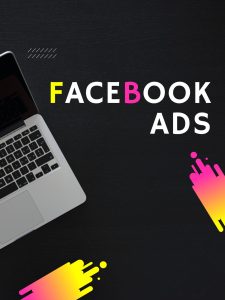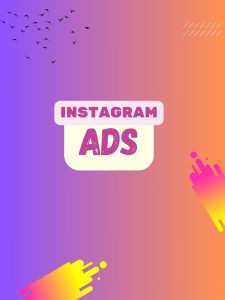Ads campaign
Ad campaigns and online advertising have become the cornerstone of marketing strategies for businesses of all sizes in this digital age. Google, Facebook, Instagram, and TikTok span from diverse opportunities to target audiences, engage them, and eventually convert them. Each of these introduces a variety of unique features to the table, which accommodates different aspects of online consumer behavior. This essay will dwell deeply on these platforms, considering their functionalities, advantages and strategic considerations weighed in exploiting them fully.
 Google ads campaign
Google ads campaign
Google ads campaign is also known as Google AdWords, is among the oldest and most used online advertising platforms. It was launched in 2000 and allows businesses to create that appear on Google’s search results pages and across its extensive network of partner sites. Google is on a pay-per-click model for every click that the user makes on an ad, advertisers pay. Also, the platform offers different ad formats search ads, display ads, video ads, facebook ads, shopping ads. Search appear alongside Google search results, whereas the display show up on websites within the Google Display Network. Video can be placed on YouTube, while shopping highlight products right in search results.
One of the strong points in using Google campaign is its solid targeting capability. It also enables advertisers to target keywords customers use in search and, through demographic targeting, a business can segment its target audience into age, gender, and location. It also has options for remarketing to reconnect users that have browsed a website.
Google Ad campaign provides one with quite detailed analytics and performance metrics, such as CTR, conversion rate, and CPC. With such information, one is able to modify the bids, keywords, and ad copy to run the campaigns optimally.
Google Ads capture high intent because the user is actively searching for products or services. Downside, it does tend to be expensive owing to competitive keyword bidding. Competition is immense in certain industries, and running an effective campaign with Google requires quite some knowledge regarding keyword research and bidding strategies.
Facebook Ads
Facebook Ads enables advertisers to reach out to users based on a variety of criteria. Invented in 2007, it allowed businesses to create that showed up in the news feeds of a user and on the right-hand side of the desktop interface and within Facebook’s Audience Network.
Ad formats include image ads, video ads, carousel ads, facebook ads, slideshow ads. These are allowed to target people by user interest, behaviors, demographics, or even their connections. The platform works by allowing an advertiser to set a budget and bid for ad space.
Facebook’s targeting is very granular. Advertisers can target users based on detailed interests, purchase behaviors, and life events. The platform also allows creating custom audiences that enable advertisers to upload their lists of customers and target those particular individuals. Creating lookalike audiences, reaching new users similar to an existing customer base, is also an option.
 Facebook itself, through its Google Ads Manager, provides detailed analytics and insights. Be it reach, engagement, or conversion rate, it shows metrics to let advertisers see whether their campaigns work or not. A/B testing tools experiment with different ad variations.
Facebook itself, through its Google Ads Manager, provides detailed analytics and insights. Be it reach, engagement, or conversion rate, it shows metrics to let advertisers see whether their campaigns work or not. A/B testing tools experiment with different ad variations.
The major benefit with Facebook Ad campaign is that of granular options for targeting, which help in creating the most personalized ad experiences. The system through which one places on this channel is pretty complicated, especially for the novice. And above all that, changes keep on happening in privacy concerns and data regulations; therefore, as an advertiser, one needs to keep informed about any changes that may affect targeting capabilities.
Instagram Ads
Instagram Ads, under the wing of Facebook, leverages the picture-friendly nature of Instagram to assure weaving advertising experiences. Since its acquisition by Facebook back in 2012, Instagram has grown to become a major player in the social media advertising space.
It run in users’ feeds, Stories, the Explore tab. The Ad campaign formats that this platform supports are photo, video, carousel, and Stories. Because Instagram has integrated its ad system with Facebook’s, campaign management from both platforms seamlessly integrates.
The Instagram ad infrastructure draws on Facebook’s targeting capabilities. This means that beside interest-based targeting, advertising on Instagram can also use the channel’s core targeting mechanisms Custom Audiences and Lookalike Audiences. However, brands are able to reach users with based on the behaviors, interests, and demographic characteristics desired. Not to mention creative and immersive ad experiences because of the medium being intrinsically visual.
Instagram provide performance metrics through Facebook Ads Manager. Key metrics include impressions, reach, engagement, and click-through rates. Since the platform is visually based, the quality of creative images and videos is of utmost importance.
Instagram is great for companies whose marketing content is visually rich. The fact that it is part of  Facebook means that it supports some pretty sophisticated targeting and analytics. Of course, the highly visual nature of Instagram also means your ad content will need to be fairly engaging; otherwise, people will scroll past. As with Facebook, their ad system can sometimes be confusingly complex to navigate, especially for beginners.
Facebook means that it supports some pretty sophisticated targeting and analytics. Of course, the highly visual nature of Instagram also means your ad content will need to be fairly engaging; otherwise, people will scroll past. As with Facebook, their ad system can sometimes be confusingly complex to navigate, especially for beginners.
TikTok Ads
TIKTOK Ads advertising, leveraging the extraordinary growth of the TikTok app since its international launch in 2016. Because of its nature and hosting of short-form videos, it opens unique possibilities for creative, hook-like it.
It will show up in the users’ For You feeds and on the Discover tab. Additionally, they can be integrated into TikTok’s Branded Hashtag Challenges and Top View. Supported ad formats include In-Feed, Top View, Branded Hashtag Challenges, and Branded Effects.
Targeting in TikTok includes user interests, behaviors and demographics. Algorithmically, the platform serves to users most likely to be interested in them based on their interaction history. TikTok also provides custom and lookalike targeting.
On TikTok, you are able to measure performance in detail through impressions, clicks, and engagement rate. Analytics tools support the advertiser in measuring campaign performance and making strategic optimizations.
TikTok, therefore, presents both creative and viral opportunities that are exciting for younger audience engagement. Algorithmic content delivery within the app helps ensure reach relevant users. However, this platform’s relatively new advertising ecosystem could present challenges to advertisers unaccustomed to its unique style of content and user behavior.
 Comparative Analysis
Comparative Analysis
Google Ads does precise keyword targeting, while in the case of Facebook and Instagram, detailed interest-based and demographic targeting is possible. TikTok basically focuses on user interest and behavioral patterns. Each of them has certain strengths Google Ad campaign in capturing high-intent traffic, Facebook and Instagram for capturing demographic and interest-based targeting, and TikTok algorithmically showing creatives to engage users.
From search to video, Google Ads Campaign offers multiple ad formats to accomplish diverse marketing objectives. Both Facebook and Instagram are visually driven platforms, but Instagram takes this even further with immersive, engaging ad formats. TikTok uses short-form video that are seamlessly integrated into user-generated content. Google can be more expensive because of competitive bidding for keywords, but it usually returns high ROIs since it is targeted based on intent. Facebook and Instagram have more flexible pricing in terms of budget and bid strategies. TikTok, since it is new, is said to open ways for cheaper advertising. Again, this may depend on the competition and quality3.
Why Ads are best?
Each of these advertising media Google Ads, Facebook, Instagram, and TikTok Ads-have their powers. Google target users based on search intent and are, therefore, good for high-quality traffic. Both Facebook and Instagram use very detailed targeting based on demographics and interests, while Instagram adds a visually oriented approach. TikTok offers a new and more creative platform to reach younger audiences with short-form video content. It is in these differences in strengths and strategic uses within each of those platforms that businesses can tailor their ad efforts to perform optimally in a dynamic digital landscape.
